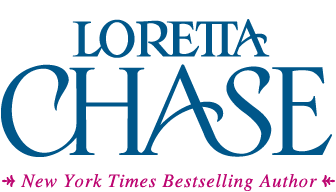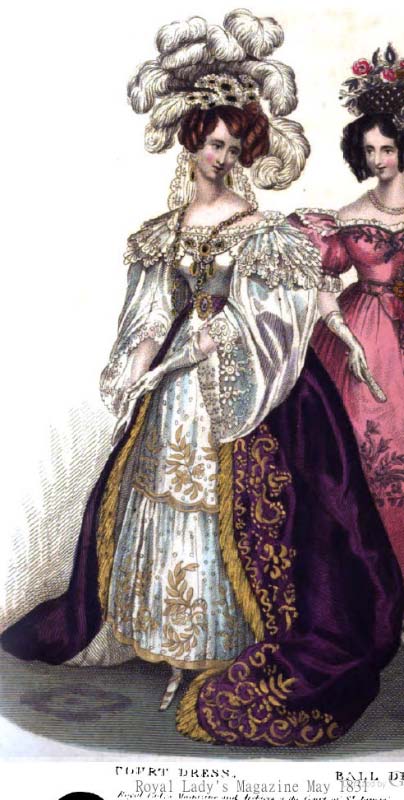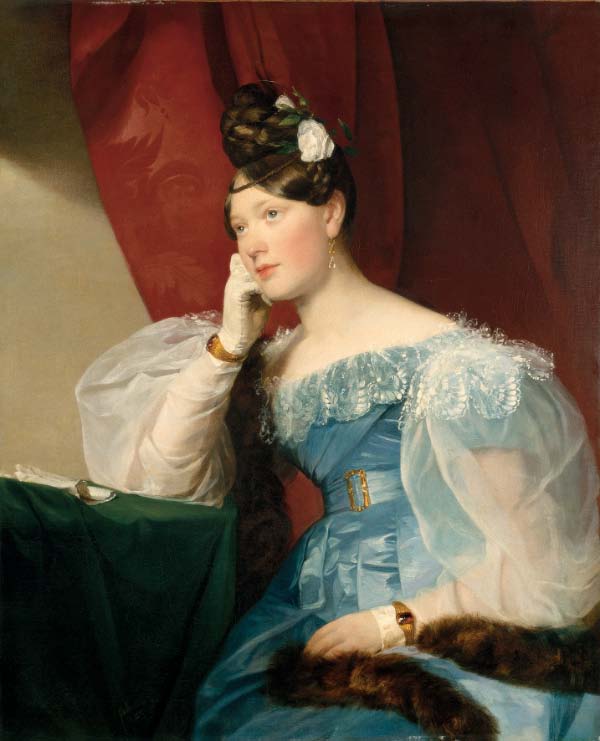The following is an expanded version of a blog post that appeared at Two Nerdy History Girls.
1833 Bridal Ensemble that appeared in several ladies' magazines. This is what Olympia wore.
There was a time when blonde lace was ubiquitous, as we learn if we look at ladies’ attire for court events. Certain magazines listed not only the attendees but also what they wore. For example, if you type “blonde” into the search box for this 1831 Royal Lady’s Magazine, you will notice that nearly every single lady wore blonde or blonde lace to the Queen’s Drawing Rooms.
This is why blonde lace features in so many of my 1830s-set books. However, the term “blonde” can be a little puzzling when we’re confronted with a description referring to “black blonde,” as happens in A Duke in Shining Armor.
Blonde lace is a silk bobbin lace. A search on YouTube will show it being made, and give you an idea why the handmade version was so very expensive and highly prized. The “blonde” part refers to the silk’s natural color, which was ecru. Once a way was found to make the silk stronger, it could be lightened, for a white blonde, and dyed, for black blonde.
Still, terminology can be confusing. “Next to Chantilly the blondes are the most important among the silk laces.” Yet elsewhere we’re told that Chantilly is a blonde lace. My impression is, the blonde made in Chantilly was considered superior. Any textile experts reading this are invited to provide further enlightenment.
These fine details, however, don’t seem to be crucial to the magazines, and definitely aren’t crucial for my books. For the purposes of A Duke in Shining Armor in particular, what you’d probably rather see are examples.
The bridal ensemble (at top) I gave my heroine Olympia includes “a pelerine of blond extending over the sleeves” and “a deep veil of blond surmounting the coiffure, and descending below the waist.”
The “French” dress she donned at the inn was based on several images, but this pink carriage dress from the Magazine of the Beau Monde, though listed for August 1833 (my story is set in June of that year), about covers what I had in mind. She wears “a black blond pelerine with square falling collar, the points descending low down the skirt and fastened in front with light green ribbon noeuds.”
However, I do think portraits capture the look of the lace much better than the stiff, stylized fashion prints. The gallery below shows some examples of each.
Images: Queen Adelaide (consort of King William IV) by Sir William Beechey, courtesy National Portrait Gallery NPG 1533; Court Dress for May 1831; Countess Julie von Woyna by Friedrich von Amerling 1832; Court Dress for April 1832; Giovannia Pacini (eldest daughter of the Italian composer Giovanni Pacini) 1831.
The two examples of court dress give you an idea of just how much blonde lace was involved. The feathers and the lace lappets were a particular feature of court dress. You can see a sample of Belgian Bobbin Lace in this lappet. And here is a sample of French Pillow-made Silk Blonde. And this is an image of a lady in what seems to be black lace.
Clicking on the image will enlarge it. Clicking on the caption will take you to the source, where you can learn more and enlarge images as needed.






